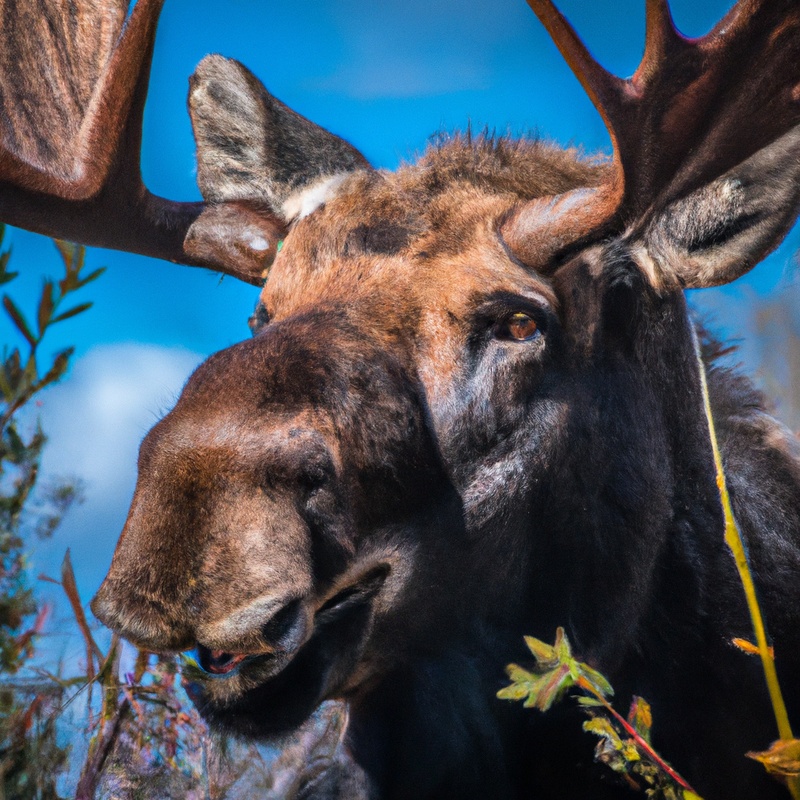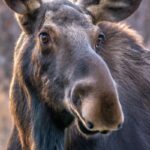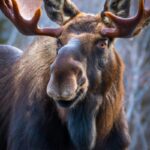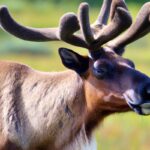Key Takeaways:
- Moose hunting in Alaska is a popular and challenging activity.
- Hunters must obtain proper licenses and permits to hunt moose in Alaska.
- Alaska’s vast territory provides ample opportunities for successful moose hunting.
- Hunting moose requires careful planning and preparation due to the harsh Alaskan wilderness.
Imagine standing amidst the breathtaking wilderness of Alaska, surrounded by majestic mountains and pristine lakes as you embark on the hunt of a lifetime.
The thrill of tracking one of the largest game animals on the planet, the moose, draws thousands of hunters each year to this untamed land.
But why is moose hunting in Alaska so appealing?
Well, it’s a combination of factors.
From the rich population and trophy opportunities to the challenging terrain that promises adventure and adrenaline, Alaska offers an experience like no other.
As an avid hunter, I’ll guide you through everything you need to know about planning, techniques, and even ethical considerations when pursuing these magnificent creatures.
So, let’s dive in and discover the allure of hunting moose in Alaska!
Aspects | Advantages | Disadvantages |
1. Abundance | Moose population is high in Alaska | Requires knowledge and tracking skills |
2. Trophy Potential | Larger-sized moose can be found | Size and quality may vary |
3. Unique Experience | Thrilling and challenging hunting adventure | Harsh weather conditions |
4. Culinary Delight | Delicious and lean meat | Requires careful butchering and processing |
The Appeal of Hunting Moose in Alaska
Rich Moose Population and Trophy Opportunities
The rich moose population in Alaska offers abundant trophy hunting opportunities.
With high numbers of moose in the region, hunters have a better chance of spotting and harvesting a trophy-worthy moose.
Alaska’s vast and diverse landscapes provide optimal habitat for moose, allowing them to thrive and grow to impressive sizes.
Whether you’re a seasoned hunter or a beginner looking for an exciting challenge, Alaska’s moose population and trophy opportunities are sure to satisfy your hunting ambitions.
Challenging Terrain and Adventure
Challenging Terrain and Adventure – two things that make hunting moose in Alaska an exhilarating experience. The rugged and unpredictable terrain adds a level of excitement to the hunt, keeping you on your toes and testing your skills.
From dense forests to steep mountain slopes, navigating through this wilderness requires physical stamina and mental agility.
Moreover, the thrill of the hunt itself, along with the breathtaking landscapes and encounters with other wildlife, creates an unforgettable adventure. So, if you’re up for a challenge and crave an adrenaline-filled hunting experience, Alaska is the place to be!
Planning a Moose Hunting Trip in Alaska
Researching Hunting Regulations and Seasons
To ensure a successful moose hunting trip in Alaska, it is essential to thoroughly research hunting regulations and seasons.
Start by visiting the Alaska Department of Fish and Game website, where you can find detailed information about licensing requirements, bag limits, and specific hunting dates for different regions.
Pay close attention to any restrictions or changes that may apply to the area you plan to hunt in.
Additionally, consider reaching out to local hunting organizations or experienced hunters for valuable insights and tips related to hunting regulations and seasons.
Doing your homework will enhance your chances of having a safe and enjoyable hunting experience.
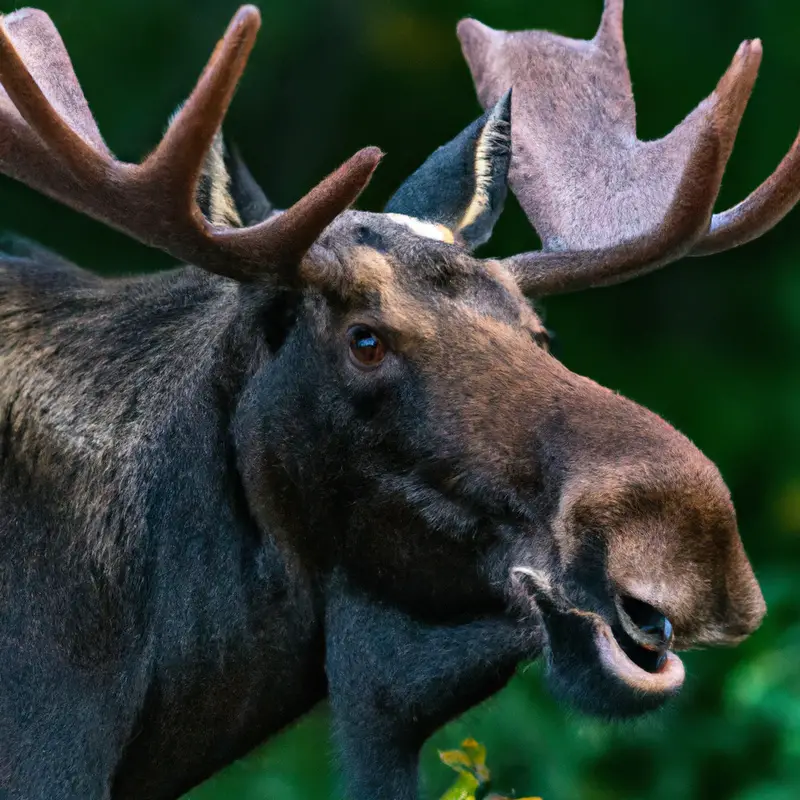
Choosing the Right Gear and Equipment
When it comes to choosing the right gear and equipment for your moose hunting trip in Alaska, there are a few key items you’ll want to consider. Firstly, a reliable rifle chambered in a caliber suitable for moose is essential.
Opt for a scope with good low light performance for those early morning hunts.
Secondly, invest in quality insulated clothing to stay warm in Alaska’s harsh climate. Thirdly, don’t forget a sturdy and comfortable backpack to carry your gear.
Lastly, pack essential items like a knife, binoculars, and a GPS device.
With the right gear, you’ll be ready for a successful moose hunting experience.
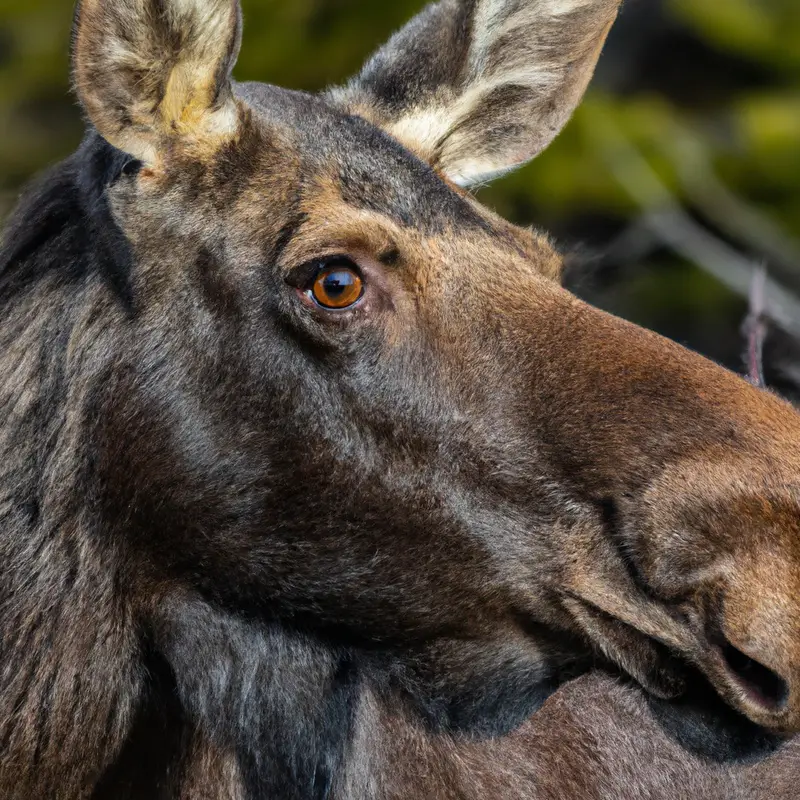
Finding a Knowledgeable Guide
Finding a knowledgeable guide is essential for a successful moose hunting trip in Alaska.
Here are a few tips to help you find the right guide.
- Research: Look for experienced guides who specialize in moose hunting in Alaska. Read reviews and check their credentials.
- Recommendations: Ask fellow hunters or local hunting organizations for recommendations. They can provide valuable insights based on their experiences.
- Communication: Contact potential guides and ask them detailed questions about their expertise, success rates, and hunting techniques.
- Location: Choose a guide who knows the hunting grounds well and can take you to areas with a high moose population.
- Personal Connection: Trust your instincts and choose a guide with whom you feel comfortable. A good rapport can make the experience more enjoyable.
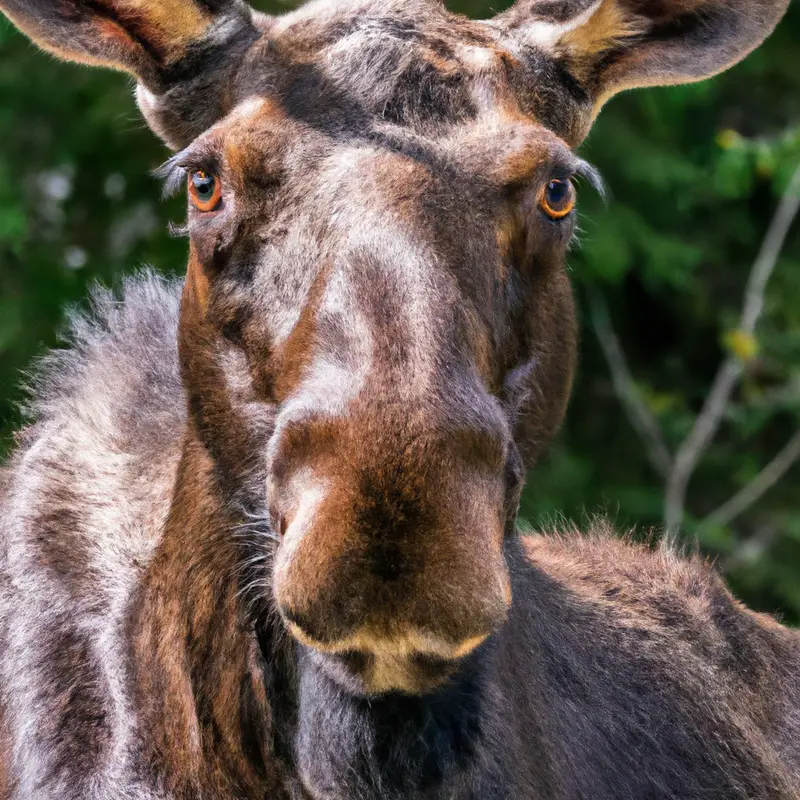
Securing the Necessary Permits and Licenses
Securing the necessary permits and licenses is an essential step when planning a moose hunting trip in Alaska.
To legally hunt moose in the state, you will need to obtain the appropriate permits and licenses from the Alaska Department of Fish and Game.
This typically includes a hunting license, a big game tag, and any necessary permits specific to the hunting area or season.
It is important to research and understand the specific requirements and regulations for the area you plan to hunt in, as they may vary.
Contact the Alaska Department of Fish and Game for detailed information and assistance with obtaining the necessary permits and licenses for your moose hunting expedition.
Best Time to Hunt Moose in Alaska
Understanding Moose Behavior and Rutting Season
Understanding Moose Behavior and Rutting Season Moose are majestic creatures that inhabit the wilderness of Alaska.
Knowing their behavior patterns is key to a successful hunt.
During rutting season, which typically occurs in the fall, male moose become more aggressive and vocal as they compete for mates.
They mark territory by scraping trees, thrashing bushes, and leaving scent markings.
Understanding these behaviors allows you to strategically position yourself for a clear shot.
Additionally, studying moose feeding and movement patterns can provide valuable insight into their daily routines, giving you an advantage in locating them.
Familiarize yourself with moose behavior to maximize your chances of a successful hunt.
Considering Weather Conditions and Safety
Considering weather conditions and safety is of utmost importance when planning a moose hunting trip in Alaska. Make sure to check the weather forecast regularly before heading out.
Dress appropriately for the conditions, wearing layers and waterproof gear.
Always carry a map, compass, and GPS for navigation. It’s essential to inform someone about your hunting plans and expected return time.
Prioritize safety and avoid taking unnecessary risks in unfavorable weather conditions.
Stay aware of your surroundings, wildlife, and any potential hazards to ensure a successful and safe hunting experience.
Factors Affecting Success Rates
Success rates in moose hunting can be influenced by various factors.
One important factor is the timing of your hunt.
Moose are most active during the rutting season, which typically occurs in late September to early October.
During this time, bulls are more responsive to calls and more aggressive, increasing your chances of success.
Additionally, weather conditions can play a role.
Hunting during clear, cooler days can improve visibility and make tracking easier.
Furthermore, having knowledge of moose behavior and using proper hunting techniques can significantly impact your success rates.
Techniques for Hunting Moose in Alaska
Spot and Stalk Method
The Spot and Stalk Method is a popular technique used for hunting moose in Alaska. It involves finding a good vantage point and spotting a moose from a distance.
Once you have located a moose, you quietly move closer while keeping out of sight.
This method requires patience, stealth, and good observation skills. It’s important to move slowly and silently, making use of natural cover.
The Spot and Stalk Method can be challenging but can greatly increase your chances of a successful moose hunt.
Calling and Rattling
Calling and rattling are two effective techniques used in moose hunting in Alaska. When calling, you imitate the sounds that a moose makes, like cow calls or bull grunts.
This can attract them towards you.
Rattling, on the other hand, involves simulating the sound of two bulls fighting. This can provoke a dominant moose to approach, thinking there’s a rival nearby.
Both techniques require skill and practice to master, but they can greatly increase your chances of a successful hunt.
Remember to study the different vocalizations and behaviors of moose to make your calls and rattling more convincing.
Setting Up Ambushes near Water Sources
Setting up ambushes near water sources can be an effective strategy for hunting moose in Alaska.
You can increase your chances of success by finding areas where moose frequently come to drink or cool down.
Look for fresh tracks, droppings, and other signs of moose activity.
Choose a concealed spot near the water source and take advantage of natural cover, such as trees or bushes, to hide yourself.
Stay patient and quiet, allowing the moose to approach the water before making your move.
Being prepared and positioning yourself strategically can greatly enhance your hunting experience.
Utilizing Decoys and Scent Lures
To effectively utilize decoys and scent lures while hunting moose in Alaska, there are a few key strategies to keep in mind.
- Decoys: Use realistic moose decoys to attract the attention of nearby moose. Place them strategically in clearings or near feeding areas to increase your chances of drawing in a moose.
- Scent Lures: Apply moose urine or gland scents to trees or bushes in your hunting area. These scents can help create a sense of intrigue and curiosity for nearby moose, increasing the likelihood of them coming closer.
- Techniques: Be patient and still while using decoys and scent lures. Avoid unnecessary movement or noise that could scare off your target. Remember, decoys and scent lures are tools to enhance your hunting experience, but proper technique and stealth are still crucial for success.
Challenges and Tips for Hunting Moose in Alaska
Navigating the Vast Wilderness and Dense Vegetation
Navigating the vast wilderness and dense vegetation in Alaska while hunting moose can be challenging.
Here are some tips to help you out:
- Familiarize yourself with the terrain: Study maps and topographical features of the area beforehand to understand how to navigate through the wilderness effectively.
- Use GPS or compass: Always carry a reliable GPS device or compass to help you stay on track and find your way back to your camp or designated areas.
- Be prepared for obstacles: Thick vegetation and dense brush can obstruct your movement. Wear appropriate clothing and gear that will protect you, such as waterproof boots and sturdy clothing.
- Stay alert: Pay attention to your surroundings and watch out for any signs of animal trails or tracks that may lead you closer to moose habitats.
- Take your time: It’s important to be patient and slow down in dense vegetation. Rushing can lead to accidents or scare away wildlife.
- Consider hiring a guide: If you are new to hunting in Alaska, it may be beneficial to hire an experienced guide who can navigate the wilderness with ease and enhance your chances of success.
Remember, safety should always be your top priority when venturing into the Alaskan wilderness.
Plan and prepare accordingly to have a successful and memorable hunting experience.
Dealing with Unpredictable Weather
Dealing with unpredictable weather while hunting moose in Alaska can be challenging.
However, there are a few tips that can help you navigate through changing conditions.
First, always check the forecast and be prepared for any sudden changes.
Layer your clothing to stay warm and dry.
Secondly, pack essential gear such as rain gear, extra socks, and waterproof boots.
Finally, be flexible with your plans and willing to adapt.
Sometimes, it’s best to wait out bad weather or shift your hunting location.
Stay prepared and stay safe!
Understanding Moose Behavior and Patterns
Understanding Moose Behavior and Patterns is key to successful hunting. Moose are most active during the early mornings and late evenings, so plan your hunts accordingly.
They prefer open areas with plenty of food sources like willow, birch, and aquatic plants.
Look for tracks, droppings, and rub marks on trees as signs of their presence. During the rutting season, bulls become more aggressive and their behavior may change.
Understanding these patterns will help you identify prime hunting areas and increase your chances of a successful moose hunt in Alaska.
Strategies for Tracking and Approaching Moose
To successfully track and approach moose in Alaska, there are a few effective strategies you can employ.
- Begin by studying moose behavior and habitat. Learn about their feeding patterns, preferred terrain, and areas they are commonly found.
- Utilize binoculars to scout for moose from a distance. Look for tracks, droppings, and other signs of recent moose activity.
- Move quietly and carefully, avoiding sudden movements and noises. Moose have excellent hearing and can be easily spooked.
- Use the wind to your advantage. Approach from downwind to prevent your scent from alerting the moose to your presence.
- Consider using calls or decoys to attract moose. Mimicking their vocalizations or displaying a decoy can lure them closer for a better shot.
Remember, tracking and approaching moose requires patience, sharp observation skills, and knowledge of their behaviors. Happy hunting!
Proper Moose Field Dressing and Care
Field Dressing Techniques for Moose
Field dressing a moose requires careful technique to ensure the meat stays fresh and the process goes smoothly. Here are some essential field dressing techniques for moose:
- Locate the kill zone: Determine the exact location of the kill to assess shot placement and track the moose efficiently.
- Remove the entrails: Make a midline incision from the chest to the anus, being careful not to puncture the stomach or intestines. Remove the entrails promptly.
- Quarter the moose: Begin by removing the legs, then divide the carcass into manageable sections for transportation.
- Cool the meat: Ensure the meat cools quickly to prevent spoilage. Consider placing bags of ice or snow inside the cavity or hanging the quarters in a shaded area.
- Clean and inspect the meat: Remove any hair, dirt, or debris from the meat surface. Inspect for any signs of damage or bruising.
Remember, proper field dressing techniques are crucial for preserving the meat and ensuring a successful hunt.
Preserving the Trophy and Antlers
Preserving the Trophy and Antlers: When it comes to preserving the trophy and antlers of a moose, there are a few important steps to follow. First, clean the antlers by removing any remaining flesh or tissue.
Next, apply a preservative such as borax or talcum powder to prevent decay and discourage insects.
Store the antlers in a dry and cool place to avoid moisture damage. If you want to display the trophy, consider getting it mounted by a professional taxidermist.
Remember to handle the antlers with care to avoid breakage.
Ethical Considerations in Moose Hunting
Respecting Hunting Laws and Regulations
Respecting hunting laws and regulations is essential for ethical and responsible hunting. It ensures the sustainability of wildlife populations and helps maintain the balance of ecosystems.
By obeying these laws, you contribute to conservation efforts and protect the future of hunting.
Remember to obtain the necessary licenses and permits, follow bag limits and hunting seasons, and abide by any specific hunting restrictions in your area. Additionally, always practice safe and responsible hunting techniques, including proper disposal of waste and respecting private property.
By doing so, you can enjoy hunting while ensuring its long-term viability.
Ensuring a Clean and Humane Kill
To ensure a clean and humane kill while hunting moose, there are a few key practices to follow. Firstly, accuracy is crucial.
By practicing your shooting skills regularly, you increase the chances of making a clean shot that quickly and humanely takes down the animal.
Secondly, it’s important to prioritize shot placement. Aim for vital organs, like the heart or lungs, to ensure a quick and effective kill.
Thirdly, use appropriate and ethical hunting methods, such as using high-caliber rifles or archery equipment that deliver enough power to kill the moose instantly.
Always remember to respect the animal and follow local regulations to maintain ethical hunting practices.
Conservation Efforts and Sustainable Hunting Practices
Conservation efforts and sustainable hunting practices are of utmost importance when it comes to moose hunting. This ensures the long-term survival of the species and the preservation of their habitats.
One key strategy is the establishment of hunting quotas to regulate the number of moose that can be harvested.
Additionally, implementing strict regulations, such as season and bag limits, helps prevent overhunting and allows for population growth. It’s crucial to promote sustainable hunting practices through education and awareness campaigns, as well as supporting research on moose population dynamics and habitat management.
The Rewards and Memories of Moose Hunting in Alaska
Obtaining High-Quality Moose Meat
If you want to obtain high-quality moose meat, here’s what you can do:
- Proper Shot Placement: It’s essential to make clean, ethical kills by aiming for vital organs. This reduces meat damage and ensures you harvest the best cuts.
- Field Dressing Techniques: Quick field dressing helps cool the meat faster and prevents spoilage. Follow proper techniques to remove the organs, ensuring cleanliness and minimizing contamination.
- Efficient Processing: Once the moose is harvested, promptly process the meat into manageable cuts. This ensures freshness and allows for proper aging, resulting in tender, flavorful meat.
- Thorough Cleaning: Prioritize cleanliness during processing. Remove any hair, debris, or shot fragments from the meat to avoid unpleasant flavors or textures.
- Proper Aging: Aging the meat in a controlled environment allows it to develop more flavor and tenderness. Hang the meat at a cool temperature (around 34-38°F for several days before further processing or consuming.
Remember, these steps are crucial to obtaining the highest quality moose meat and to ensure that your hunting efforts result in delicious and satisfying meals.
Creating Lifelong Hunting Stories and Bonding
Creating lifelong hunting stories and bonding is one of the most rewarding aspects of hunting.
When you share the experience of hunting with friends or family, you’re not just out there chasing game, you’re creating memories that will last a lifetime.
The excitement, the challenges, and the triumphs all become parts of your hunting stories that you can share again and again.
These shared experiences also strengthen the bonds between you and your hunting partners, as you rely on each other and work together towards a common goal.
So, get out there, create your own hunting stories, and strengthen those bonds with the people you cherish.
Preserving the Trophy as a Reminder of the Adventure
Preserving the trophy from your moose hunting adventure is a great way to cherish the memories.
One popular method is to have the animal professionally mounted by a taxidermist.
They can create a lifelike display that will last for years.
Another option is to have the antlers made into a unique piece of decor, such as a chandelier or a lamp.
You can also consider preserving the hide or other parts of the moose to create smaller keepsakes like wallets or jewelry.
Whatever you choose, preserving the trophy will ensure that you have a tangible reminder of your exciting and unforgettable hunting experience in Alaska.
Final Verdict
Hunting moose in Alaska offers a unique and thrilling experience for outdoor enthusiasts. With its rich moose population and trophy opportunities, challenging terrain, and sense of adventure, it is no wonder that Alaska is a top destination for moose hunting.
Planning and preparation are key, including researching hunting regulations, choosing the right gear, finding a knowledgeable guide, and securing necessary permits and licenses.
Understanding moose behavior, utilizing different hunting techniques, and overcoming challenges such as navigating dense vegetation and unpredictable weather will increase the chances of a successful hunt. Ethical considerations, including respecting hunting laws and conservation efforts, should always be at the forefront.
The rewards of hunting moose in Alaska are not only the high-quality meat obtained, but also the memories and stories created and the trophy preserved as a symbol of the adventure.
Overall, hunting moose in Alaska is an unforgettable experience that combines the thrill of the hunt with the beauty and vastness of the Alaskan wilderness.
